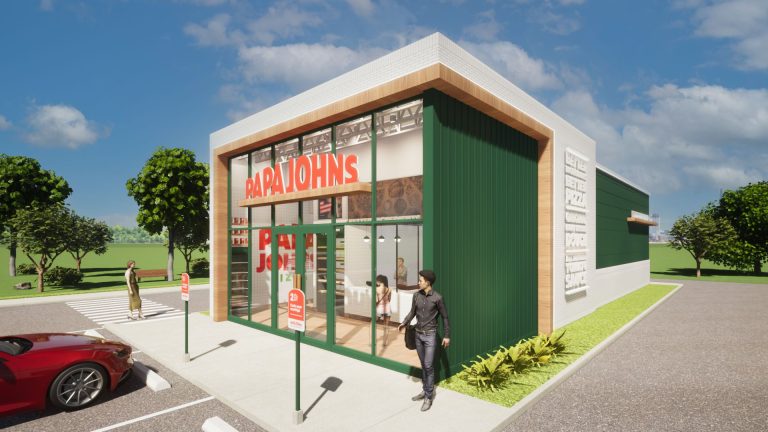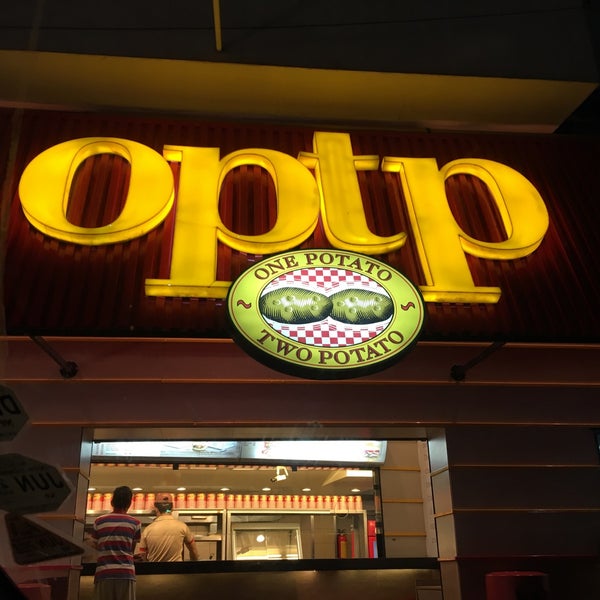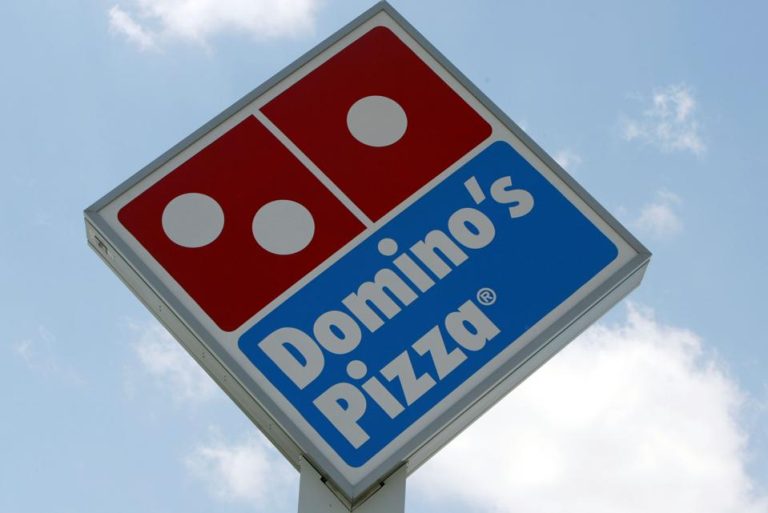KFC-The Legacy of a Global Fast-Food Icon
Introduction
Kentucky Fried Chicken, commonly known as KFC, is one of the most iconic names in the global fast-food industry. Founded in 1930 by Colonel Harland Sanders, KFC has grown from a modest restaurant in Corbin, Kentucky, into a worldwide franchise with a presence in over 150 countries. This article explores the origins of KFC, examines its business model and menu evolution, delves into its global expansion and marketing strategies, and discusses its community engagement efforts, impact on the fast-food industry, and future outlook. Also check out Domino’s history.

The Origins of KFC
The Early Days of Colonel Sanders
Colonel Harland Sanders was born on September 9, 1890, in Henryville, Indiana. Raised on a farm, Sanders learned to cook from his mother, who passed on her knowledge of Southern cuisine. After various jobs, including streetcar conductor and insurance salesman, Sanders turned his attention to cooking.
In 1930, Sanders opened a small restaurant at his gas station in Corbin, Kentucky, to serve meals to travelers. His fried chicken, cooked using a secret blend of 11 herbs and spices, quickly gained popularity among locals. Sanders’s unique cooking method involved marinating the chicken, breading it with a special flour mixture, and frying it under pressure to create a crispy, flavorful product that stood out from other fried chicken offerings of the time.
The Birth of KFC
The turning point for KFC came in 1952 when Colonel Sanders decided to franchise his fried chicken recipe. Partnering with Pete Harman, a friend and restaurant owner, Sanders opened the first KFC franchise in Salt Lake City, Utah. This move was instrumental in transforming KFC from a local restaurant into a national and eventually international brand.
The franchise model allowed KFC to expand rapidly by leveraging the resources of franchisees. These partners were granted the rights to use KFC’s brand, access the secret recipe, and receive training on restaurant operations. This model proved highly successful and became the foundation for KFC’s growth strategy.
KFC’s Business Model
The Franchise System
KFC’s franchise model has been a cornerstone of its success. By franchising, KFC was able to expand its reach without bearing the full financial risks associated with opening new locations. The key components of KFC’s franchise system include:
- Rapid Expansion: Franchising enabled KFC to grow quickly across the United States and internationally. Franchisees took on the financial responsibility for opening and operating new restaurants, allowing KFC to expand its footprint without incurring significant costs.
- Local Expertise: Franchisees brought valuable local knowledge and business skills to their restaurants. This local expertise helped KFC adapt its offerings to different markets and cater to the specific needs of customers in various regions.
- Consistency: KFC’s franchise system included detailed operational procedures to ensure consistent quality across all locations. This involved strict guidelines for food preparation, customer service, and store management.
- Brand Strength: The KFC brand’s strong visual identity, including the iconic bucket of chicken and Colonel Sanders’s image, served as a powerful marketing tool. The brand’s recognizable symbols and slogans helped KFC stand out in the competitive fast-food market.
The Evolution of the KFC Menu
The Original Recipe and Its Legacy
KFC’s Original Recipe chicken is a central element of the brand’s identity. Created by Colonel Sanders, the recipe features a secret blend of 11 herbs and spices. This secret recipe is stored in a secure vault, and only a few individuals know the full list of ingredients. The preparation involves marinating the chicken, breading it with the seasoned flour mixture, and frying it under pressure to achieve a crispy texture.
The Original Recipe has remained a staple of KFC’s menu since its creation. It represents the core of KFC’s offerings and continues to be a favorite among customers.
Expanding the Menu
As KFC grew, the company expanded its menu to include a variety of new products. These additions aimed to attract different customer segments and keep the menu exciting. Key expansions include:
- Extra Crispy Chicken: Introduced in the 1990s, Extra Crispy Chicken features a double-breaded coating for an extra crispy texture, offering an alternative to the Original Recipe chicken.
- Chicken Sandwiches: To cater to customers seeking alternatives to fried chicken, KFC introduced chicken sandwiches such as the KFC Chicken Sandwich and Big Box. These sandwiches have become popular menu items.
- Chicken Tenders and Nuggets: KFC introduced chicken tenders and nuggets to offer a bite-sized option for families and children. These products complement the traditional fried chicken menu.
- Sides and Desserts: KFC’s menu includes a range of sides and desserts, such as mashed potatoes, coleslaw, and apple pie, which enhance the dining experience.
- Specialty Items: KFC regularly introduces limited-time offers and regional specialties. These items, like the “Nashville Hot Chicken” and “Chicken & Waffles,” create excitement and attract customers.
KFC’s Global Reach
International Expansion
KFC’s international expansion began in 1965 with the opening of its first overseas location in Canada. The company used a combination of direct investments and franchising to establish a global presence.
- Direct Investments: KFC established company-owned restaurants in key international markets to maintain control over brand quality and operations.
- Franchising: KFC expanded globally through franchising, partnering with local entrepreneurs to open new restaurants. This approach allowed KFC to leverage local expertise and navigate regulatory environments.
- Market Adaptation: KFC adapted its menu to meet local tastes. For example, KFC in Japan offers “KFC Christmas Chicken,” a tradition that began in the 1970s. In India, KFC offers vegetarian options like the “Veg Zinger” burger to cater to the large vegetarian population.
Adapting to Local Markets
KFC’s success in international markets is largely due to its ability to adapt its menu and operations to meet local preferences. Some examples of local adaptations include:
- Japan: KFC’s Christmas marketing campaign in Japan has become a cultural phenomenon. The tradition of eating KFC for Christmas dinner in Japan began in the 1970s and continues to this day.
- India: In India, KFC offers vegetarian options such as the “Veg Zinger” burger to cater to the dietary preferences of the population, which includes a significant number of vegetarians.
- China: KFC’s menu in China features items like “Dragon Twister” wraps and “Egg Tart” desserts. These products are tailored to Chinese tastes and have been well received by local customers.
- South Korea: KFC in South Korea offers “Hot Wings” and “Korean BBQ Chicken” to appeal to local tastes. These menu items reflect South Korean cuisine and have become popular among Korean customers.
KFC’s Marketing Strategies
Iconic Advertising Campaigns
KFC’s marketing strategies have played a significant role in establishing the brand’s identity and driving its success. The company has employed a variety of advertising techniques to connect with customers and promote its products.
- The Colonel Sanders Persona: Colonel Sanders’s image has been central to KFC’s branding efforts. His distinctive appearance, including his white suit and black string tie, has become synonymous with the KFC brand. Sanders’s persona is portrayed as a friendly, trustworthy figure who represents the quality and heritage of KFC’s food.
- “Finger Lickin’ Good” Slogan: The “Finger Lickin’ Good” slogan was introduced in the 1950s and has become one of the most recognizable catchphrases in advertising history. This slogan emphasizes the deliciousness of KFC’s food and has been a central element of the brand’s marketing campaigns.
- Innovative Marketing Techniques: KFC has employed innovative marketing strategies to engage customers. For example, KFC’s “KFC Bucket” became a symbol of family meals and gatherings. The company has also embraced digital marketing through social media campaigns and influencer partnerships to reach younger audiences.
- Specialty Promotions: KFC frequently runs limited-time offers and seasonal promotions to keep the menu exciting for customers. These promotions often feature new products or special deals, encouraging customers to visit KFC more frequently. Examples include the “KFC Double Down” sandwich and “Chicken & Waffles” menu items.
Social Media and Digital Marketing
KFC has effectively utilized social media and digital marketing to connect with customers and promote its products.
- Social Media Engagement: KFC’s social media strategy focuses on creating engaging content that resonates with its audience. The brand uses platforms like Twitter, Facebook, Instagram, and YouTube to share updates, run contests, and interact with fans. KFC’s social media presence often features humorous posts and creative content that encourages followers to engage with the brand.
- Collaborations and Influencer Marketing: KFC collaborates with celebrities, influencers, and other brands to expand its reach and appeal to different demographics. Partnerships with figures such as rapper Lil Nas X and celebrity chef David Chang have helped KFC stay relevant and attract new customers.
Community Engagement and Corporate Social Responsibility
Community Engagement Efforts
KFC is committed to giving back to the communities it serves through a variety of charitable initiatives and community support programs.
- KFC Foundation: The KFC Foundation supports youth and community programs through grants and donations. The foundation focuses on areas such as education, career readiness, and community development. Initiatives include scholarships for high school students, funding for local food banks, and support for youth leadership programs.
- Environmental Sustainability: KFC is dedicated to environmental sustainability through efforts such as waste reduction, sustainable sourcing of ingredients, and energy-efficient practices. The company has set ambitious goals for reducing its carbon footprint and improving the sustainability of its supply chain. These efforts include sourcing chicken from suppliers who meet animal welfare standards and reducing the use of single-use plastics in packaging.
- Local Community Support: KFC engages with local communities through sponsorships, events, and donations. These efforts include supporting local sports teams, organizing community events, and providing meals to those in need. KFC’s community engagement initiatives aim to build strong relationships with the communities where the brand operates.
Corporate Social Responsibility
KFC’s corporate social responsibility (CSR) efforts focus on three main areas: food quality and safety, environmental sustainability, and social impact.
- Food Quality and Safety: KFC is committed to providing high-quality, safe food to its customers. The company maintains strict standards for food safety and quality control throughout its supply chain. KFC’s suppliers are required to adhere to rigorous guidelines to ensure the safety and quality of ingredients.
- Environmental Sustainability: KFC is working to reduce its environmental impact through initiatives such as energy-efficient restaurant design, waste reduction, and sustainable sourcing. The company has implemented programs to reduce energy consumption in its restaurants and improve the sustainability of its packaging materials.
- Social Impact: KFC’s social impact initiatives focus on supporting local communities and promoting education and career development. The KFC Foundation provides scholarships and grants to help individuals achieve their educational and career goals. KFC also partners with organizations to support community development projects and provide assistance to those in need.
The Impact of KFC on the Fast-Food Industry
Setting Industry Standards
KFC has had a significant influence on the fast-food industry through its practices and innovations.
- Franchise Model: KFC’s successful use of the franchise model set a standard for other fast-food brands. By leveraging the resources and expertise of franchisees, KFC was able to expand rapidly and achieve global reach. This approach demonstrated the effectiveness of franchising as a growth strategy and inspired other fast-food chains to adopt similar models.
- Menu Innovations: KFC’s development of unique menu items has influenced industry trends and set a benchmark for innovation in the fast-food sector. The company’s creativity in menu offerings, such as the introduction of chicken sandwiches and specialty items, has inspired other brands to experiment with new products and flavors.
- Marketing Techniques: KFC’s marketing strategies, including the use of Colonel Sanders as a brand ambassador and memorable advertising campaigns, have been emulated by other fast-food chains. The brand’s innovative marketing techniques have set a standard for engaging with customers and building brand loyalty.
- Global Expansion: KFC’s success in international markets has inspired other fast-food chains to explore global opportunities. The company’s ability to adapt its menu and business model to different cultures has provided a roadmap for other brands seeking to expand internationally.
Competitor Analysis
KFC faces competition from several major fast-food brands, each with its own strengths and market positioning.
- McDonald’s: McDonald’s is a global fast-food giant known for its burgers, fries, and breakfast items. The brand’s success is driven by its extensive menu, efficient operations, and strong global presence. McDonald’s competes with KFC by offering a diverse range of products and leveraging its extensive network of locations.
- Popeyes: Popeyes is a direct competitor to KFC in the fried chicken market. Known for its Louisiana-style chicken and spicy flavors, Popeyes has gained popularity with products such as the spicy chicken sandwich. The brand’s focus on bold, flavorful chicken offerings positions it as a strong competitor to KFC.
- Chick-fil-A: Chick-fil-A is known for its high-quality chicken sandwiches and exceptional customer service. The brand’s focus on premium ingredients and customer experience has earned it a loyal following. Chick-fil-A competes with KFC by emphasizing quality, freshness, and a customer-centric approach.
- Burger King: Burger King, while primarily known for its burgers, also competes with KFC through its chicken offerings, including chicken sandwiches and nuggets. The brand’s extensive menu and global presence make it a formidable competitor in the fast-food industry.
KFC’s Chefs and Culinary Innovation
The Role of Chefs at KFC
KFC’s culinary team plays a crucial role in maintaining the quality of the menu and introducing new items. The chefs at KFC are responsible for ensuring that the Original Recipe and other core products remain consistent in taste and quality across all locations.
- Recipe Development: KFC’s chefs are involved in the creation and refinement of recipes. They work to develop new products that align with KFC’s brand identity and meet customer preferences. This includes experimenting with new flavors, cooking techniques, and ingredient combinations.
- Quality Control: Maintaining the consistency and quality of KFC’s food is a top priority for the culinary team. Chefs oversee the training of kitchen staff to ensure that the preparation methods are followed correctly. They also conduct regular inspections and taste tests to uphold KFC’s standards.
- Menu Innovation: The chefs at KFC are tasked with innovating the menu to keep it fresh and exciting. This involves developing limited-time offers and seasonal items that generate buzz and attract customers. KFC’s culinary team also explores regional specialties and adapts the menu to local tastes in international markets.
Signature Dishes and Specialties
KFC’s menu features a variety of signature dishes and specialties that have become synonymous with the brand.
- Original Recipe Chicken: The Original Recipe chicken, with its secret blend of 11 herbs and spices, remains KFC’s flagship product. This iconic dish is known for its unique flavor and crispy texture, making it a favorite among customers worldwide.
- Extra Crispy Chicken: KFC’s Extra Crispy Chicken offers a different take on the classic fried chicken, featuring a double-breaded coating for an extra crunchy texture. This product caters to customers who prefer a more substantial crunch in their chicken.
- Chicken Sandwiches: KFC’s chicken sandwiches, such as the KFC Chicken Sandwich, have gained popularity for their flavorful chicken fillets and signature sauces. These sandwiches provide a convenient and delicious option for customers seeking a quick meal.
- Specialty Items: KFC regularly introduces specialty items to keep the menu exciting. These products, like the “Nashville Hot Chicken” and “Chicken & Waffles,” showcase KFC’s creativity and willingness to experiment with new flavors and culinary trends.
Future Outlook
Trends and Innovations
As KFC looks to the future, the brand is focused on several key trends and innovations to drive growth and stay competitive in the fast-food industry.
- Plant-Based Menu Items: In response to the growing demand for plant-based options, KFC has introduced products such as the “Beyond Fried Chicken” in partnership with Beyond Meat. These plant-based menu items cater to customers seeking alternatives to traditional meat products and align with trends toward healthier and more sustainable eating.
- Digital Transformation: KFC is investing in digital technologies to enhance the customer experience and streamline operations. This includes the implementation of mobile ordering and delivery services, as well as the use of data analytics to improve menu offerings and customer engagement.
- Sustainability Initiatives: KFC is committed to advancing its sustainability efforts through initiatives such as reducing food waste, sourcing ingredients responsibly, and improving the energy efficiency of its restaurants. These efforts aim to minimize the brand’s environmental impact and meet the expectations of environmentally conscious consumers.
- Global Expansion: KFC continues to explore opportunities for growth in emerging markets. The brand’s ability to adapt its menu and business model to different cultural contexts positions it well for further international expansion.
Challenges and Opportunities
KFC faces several challenges and opportunities as it navigates the evolving fast-food landscape.
- Health and Wellness Trends: As consumers become more health-conscious, KFC must continue to innovate its menu to offer healthier options without compromising on taste. This includes exploring new cooking methods, ingredient alternatives, and portion sizes to meet the demand for healthier choices.
- Competitive Pressure: The fast-food industry is highly competitive, with new players entering the market and established brands continuously innovating. KFC must stay ahead of competitors by maintaining its focus on quality, innovation, and customer satisfaction.
- Supply Chain Management: Ensuring a consistent supply of high-quality ingredients is crucial for KFC. The brand must navigate challenges related to supply chain disruptions, sustainability, and cost management to maintain the quality and affordability of its products.
- Technological Advancements: Embracing technological advancements, such as artificial intelligence and automation, presents opportunities for KFC to enhance operational efficiency and customer experience. Implementing these technologies effectively will be key to staying competitive in the fast-food industry.
Conclusion
KFC’s journey from a small restaurant in Corbin, Kentucky, to a global fast-food powerhouse is a testament to the brand’s resilience, innovation, and commitment to quality. By leveraging the franchise model, adapting its menu to local tastes, and employing effective marketing strategies, KFC has established itself as a leader in the fast-food industry.
As KFC looks to the future, the brand is well-positioned to capitalize on emerging trends and opportunities. By focusing on sustainability, digital transformation, and menu innovation, KFC can continue to grow and maintain its status as a beloved fast-food brand worldwide. Through its commitment to community engagement and corporate social responsibility, KFC demonstrates that it is not only a successful business but also a positive force in the communities it serves.
KFC’s legacy is built on the vision and determination of Colonel Harland Sanders, whose original recipe for success continues to inspire the brand’s growth and innovation. As KFC evolves to meet the changing needs of consumers, it remains true to its roots, delivering the delicious, high-quality food that has made it a household name for generations.





